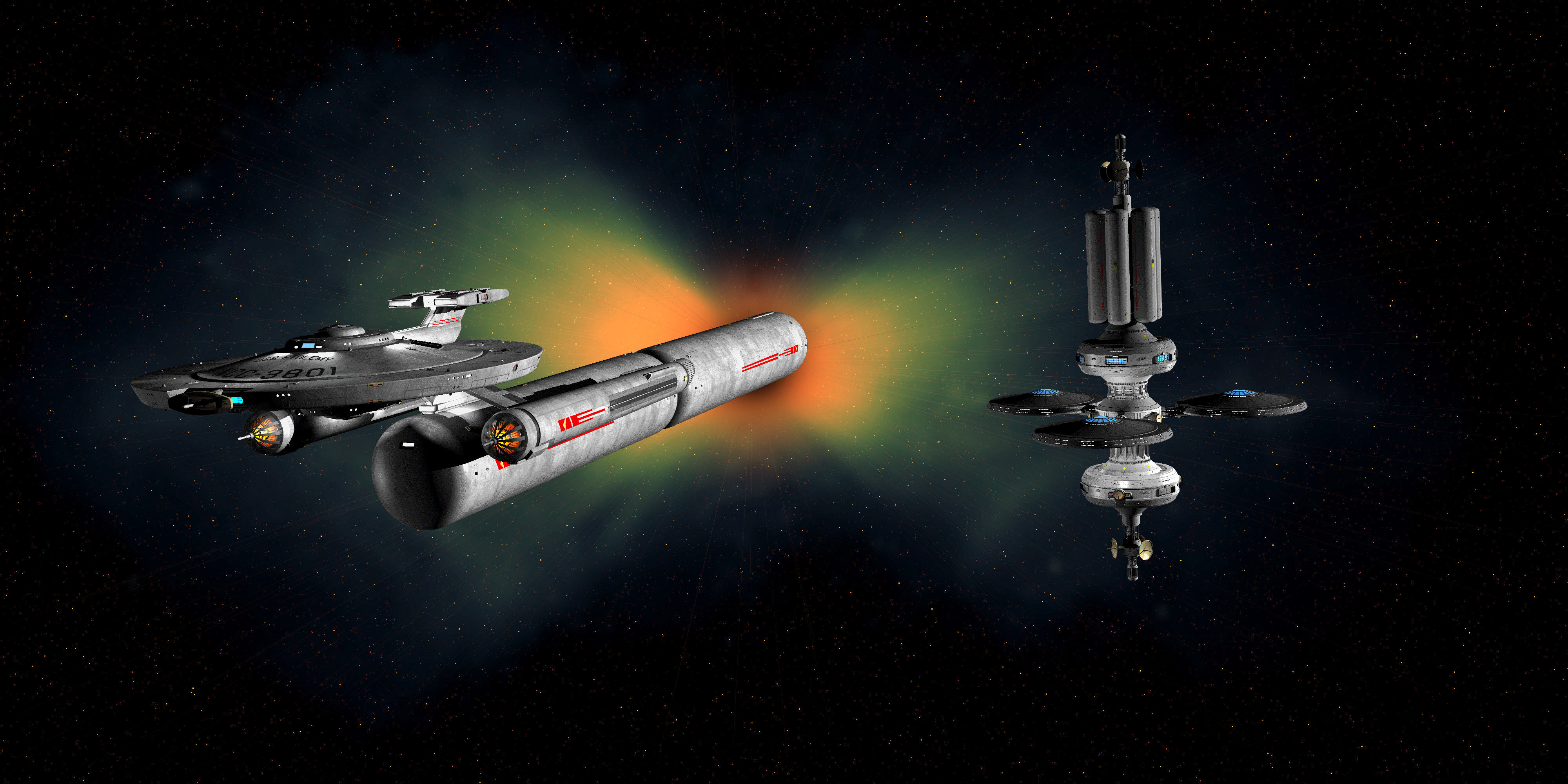HOME | DD
 NewDivide1701 — Ptolemy Class Revised
NewDivide1701 — Ptolemy Class Revised

#star #startrek #trek #startrekfanart
Published: 2022-04-13 16:59:43 +0000 UTC; Views: 4582; Favourites: 40; Downloads: 49
Redirect to original
Description
Once again, a revision of the Ptolemy class tug/transport in DWG, 3DS and OBJ format.
It's a good thing I've gotten into the habit of inserting DWG files into the ZIP files with the others, cause I was having trouble with the ones I already had on my computer.
Anyways, the revised deflector dish, thrusters on the warp drive, and added solar panels.
The pods on top are actually helium-3 and deuterium fuel tanks chilled to as close to absolute zero as much as possible since helium is in a liquid state at 4.2K, that's damn near absolute zero.
This is because the ship's warp drive is powered by a dilithium enhanced fusion reactor instead of antimatter using dilithium as a reaction controller. The dilithium crystal -- meaning the Burn plot is still safe -- allows the warp core to safely harness enough fusion power to power the warp drive. The reason antimatter is used is because antimatter releases 300 times the amount of energy per mol than fusion power. But this means the ship goes through 300 times as much fuel than antimatter.
If say Not JJ's Enterprise had 3 years worth of antimatter and was replaced with helium-3, then the helium-3 supply would only last 3.65 days. The fuel pods on top of the Ptolemy, half is helium-3, the other half is deuterium chilled as close to absolute zero as much as possible. Not JJ's Enterprise has 8 antimatter pods, and the volume of the helium-3 section of the Ptolemy fuel pods is about equal to 50 antimatter pods. That's 22.8 days of warp power. With 2 pods, about 45 days. So 90 days if the pods were nothing by liquid helium-3 fuel, and the ship had extra storage within it for deuterium.
That means Enterprise would need 16 of those pods to store deuterium and helium-3.
Then there's the other problem, furnishing the power requirements. Dilithium is used to safely burn 300 times the amount of fusion fuel needed. Without it, the fusion reactor would need to be pretty massive and bulky.... say 300 times bigger. And this doesn't include the cooling systems either. The coolant tanks, conduits, heat exchangers, radiators, even thermoelectric generators. So the Burn plot is still safe, and to get anywhere without dilithium, the ship's reactor and fuel would need to be one of the transport containers just to reach warp 4 -- let alone passengers, cargo, and all that other fun stuff.
As to Spock's recrystalization method from Star Trek 4: The Voyage Home? At best it was a patch job that was best feasible with fission reactors from the 20th and 21st century.
As to Me Hani Ika Hali Ka Po's method of recrystalization? We don't know what happened to her after, "Such Sweet Sorrow, pt2." But let's say everything was ok, but recrystalization has its limitations of recycling dilithium. Such as the toxic waste trilithium which might not be recyclable even by 31st century standards. And with the buildup of trilithium, existing dilithium still started to run dry. HOWEVER, moved the shortages to the 31st century instead of say the 25th century, and more ships means more demands for dilithium.
What about synthetic dilithium from the TNG Technical Manual? There are numerous discrepancies in the book I still cringe over. The Captain's Yacht's dimensions didn't work out right, the impulse fusion reactor's wall thickness is actually bigger than the reactor itself. 6m diameter reactor with about a 650cm wall thickness, think about that. Oh, and somehow 1000 photon torpedoes has 1000 times the energy released than 500 photon torpedoes. So double the amount of antimatter, you magically get 1000 times the energy. So I think we can reject that section of the tech manual.
The station was a rejected station I had and it made from spare parts from the other stations I had on hand.
Related content
Comments: 2

👍: 0 ⏩: 0

👍: 0 ⏩: 0

























